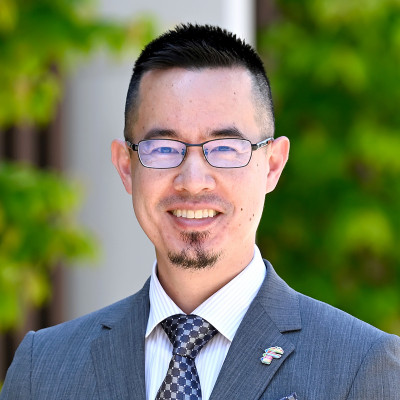Sessions / Location Name: A31
Physical Location
Location: A31
Building: Miwa Campus Building < The University of Nagano
The Teaching of LOTE in a Japanese High School #2827
In Japan, English is the dominant foreign language taught in classrooms and a limited number of high schools provide languages other than English (LOTE) (MEXT, 1996, Okabe, 2002). However, teaching LOTE is said to be beneficial for developing open-minded behavior towards those of different cultures and backgrounds, and improving metalinguistic competence such as expressing oneself and understanding others (Psychol, 1999).
The target organization hosts a program called “Languages of the World” in a newly established high school, which focuses on LOTE. In this course, all first-year students learn five languages: Chinese, Korean, French, German, and Spanish, each taking eight class hours. Not only do the syllabus and materials used in this program focus on language knowledge, such as grammar and pronunciation, they also touches on the cultures of the areas where the languages are spoken. While there were challenges, such as a lack of familiarity with LOTE, and much to be improved in this first-time program, the initiative had several meaningful and productive outcomes for the students. A survey sent out to students after the completion of the school year revealed that many experienced personal growth in cultural understanding.
Masks’ impact on listening communication in the L2 context #2736
Since the start of the COVID-19 pandemic, the wearing of face masks during all interpersonal contact has become our “new normal.” Though an indispensable part of our daily outings, it is indisputable that masks impede verbal communication by both muffling speech sounds and blocking visual cues (e.g., facial expressions, emotional information) from view. While this impediment might only be minor for people conversing in their first language, the current study sought to investigate the impact that masked speech had on language learners’ comprehension of a second language. A sample of 192 Japanese university students were given a listening task under three conditions: masked speaker, unmasked speaker, and audio only. Results indicated that learners had significantly more difficulty comprehending the speech when viewing a masked speaker, even more so than when they were just listening to voice recording (i.e., with no accompanying picture). We will discuss with attendees current theories of speech perception and listening comprehension which may explain these findings, as well as ideas on how to counteract this effect to communicate more effectively in the classroom while masked.
Connected learning, firsthand – five useful ideas (regardless of your book) #3163
You want learning connected – to the students, language and real usage as well as your book. The author will share five useful ideas from English Firsthand – including ways to use them with (nearly) any textbook: Have the book talk directly to your students, fluency work from the beginning, multisensory pronunciation work and more. And he’ll add a few extras to help you (re)imagine your teaching.
CEFR-informed grammatical features of academic prose #2814
This presentation attempts to relate Developmental Progression Index of Grammatical Complexity (DPIGC) in academic prose proposed by Biber et al. (2011) to the six CEFR levels. First, I will compare grammatical features in the index with those in the English Grammar Profile and then propose CEFR-informed index of grammatical complexity of academic prose. A series of corpus-based studies by Biber and his colleague (Biber 2006, Biber & Gray 2016, among others) reveal that grammatical features frequently appearing in academic prose differ drastically from those in conversation. The former uses dependent phrases functioning as pre-and post-modifiers of the head noun, while the latter uses dependent clauses functioning as constituents of other clauses such as verb complements and adverbial clauses. Based on these findings, Biber et al. (2011) proposed the DPIGC. This index, however, is not well recognized by language professionals working in the area of EAP, hard-CLIL and EMI, although they aim at the appropriate uses of academese. One of the reasons for this lies in the lack of studies which relate the DPIGC to more widely accepted proficiency scales: e.g., the CEFR’s six proficiency levels. Hence, this presentation provides a clear CEFR-based descriptors of grammatical complexities in academic prose.



